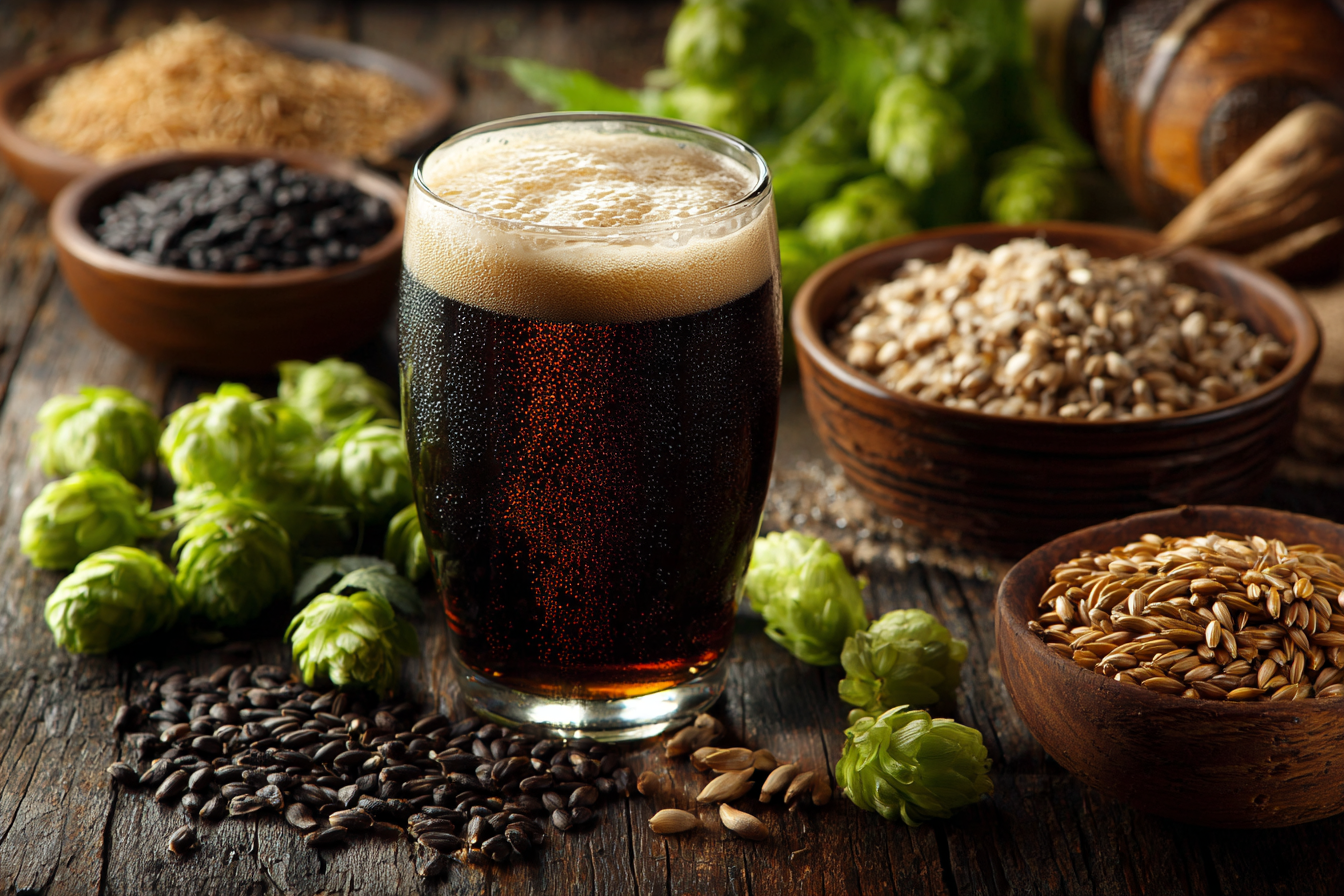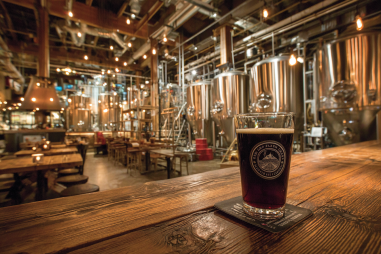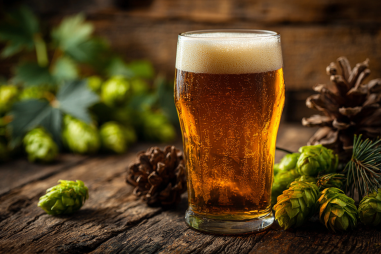American Porter is a beloved beer style known for its rich, roasted character and smooth drinkability. At the heart of this complexity lies a careful selection of brewing ingredients that work harmoniously to create its distinctive profile. Whether you’re a homebrewer aiming to perfect your next batch or a beer enthusiast eager to deepen your understanding, exploring the core ingredients—malt, hops, yeast, and water—offers valuable insights into what makes American Porter so special.
The Role of Malt Types in American Porter
Malt is the backbone of most beers, and in American Porter, it plays a starring role in delivering depth and nuance. The malt bill typically includes a combination of base malts alongside specialty malts that contribute color, flavor, and mouthfeel. The most crucial malt varieties for American Porter are chocolate malt, roasted barley, and crystal malt.
Chocolate malt is roasted to a medium-dark level, lending the beer rich, roasted flavors with notes of cocoa and coffee. It provides a smooth bitterness that’s more mellow compared to darker roasts, enhancing the beer’s dark complexity without overpowering it.
Roasted barley, on the other hand, is an unmalted grain that is roasted to an intense black color. This adds sharp roasted bitterness and aroma, reminiscent of espresso or burnt toast. Roasted barley is essential for giving American Porter its characteristic dark hue and underpinning bitterness that balances the malt sweetness.
Crystal malt brings a complementary sweetness and caramel-like flavors to the beer. It also contributes to a fuller body and helps improve head retention. Depending on the crystal malt’s color range—from light to medium-dark—it can add anything from subtle to pronounced caramel and toffee notes, balancing the roasted elements nicely.
Together, these malts create that signature layered malt foundation, where chocolate and roast interplay harmoniously with a touch of sweet complexity, giving American Porter its inviting richness.
Hops Choices and Their Subtle Influences
While American Porter is malt-forward, hops still play a subtle but crucial role. The choice of hops impacts the bitterness, aroma, and even the perceived balance of the brew. Typically, brewers opt for American hop varieties that contribute moderate bitterness and a clean finish without overshadowing the malt profile.
Common hop varieties used in American Porter include:
- Willamette: Known for its mild, earthy, and floral characteristics, it adds a gentle bitterness and subtle aromatic complexity.
- Cascade: Introduces mild citrus and floral notes, brightening the beer slightly and enhancing its drinkability.
- Chinook: Offers piney and spicy undertones, which can add interest without dominating the malt character.
The bitterness level in an American Porter typically ranges from moderate to moderately high, helping to balance the malt sweetness and roasted notes. Hops are often added at multiple stages—early additions for bitterness and late additions for aroma—to ensure a well-rounded profile without excessive hop-forwardness.
Yeast Strains and Fermentation Character
Although malt and hops are the most obvious contributors to flavor, yeast is equally important in defining the character of American Porter. Most brewers use clean, American ale yeast strains that ferment efficiently and produce minimal esters or phenols. This allows the malt and hop flavors to shine without unnecessary yeast-derived flavors overshadowing them.
Common yeast strains for American Porter often belong to the Saccharomyces cerevisiae family, known for their clean attenuation, moderate flocculation, and balanced fermentation profiles. This results in a smooth mouthfeel and a slightly dry finish, which complements the rich malt backbone.
Some brewers experiment with yeast strains that produce subtle fruity esters or mild spicy phenols, providing an additional layer of complexity. However, it’s important to control fermentation temperature closely to avoid off-flavors that would detract from the style’s smoothness.
Water Profile Considerations for Porter Brewing
Water chemistry is an often overlooked, yet critical element in porter brewing. The mineral content and pH of the brewing water can transform how malt and hops express themselves, influencing clarity, flavor, and mouthfeel.
For American Porter, a water profile that highlights malt sweetness while supporting hop bitterness is ideal. Typically, brewers aim for a balanced sulfate-to-chloride ratio, with sufficient sulfate to accentuate hop bitterness and chloride to enhance malt richness and smoothness.
- Sulfates enhance hop bitterness and dryness, which can help balance the sweet and roasted malt flavors.
- Chlorides promote fullness and smooth mouthfeel, emphasizing malt sweetness and body.
Water hardness also influences mash pH, which affects enzyme activity and sugar extraction during brewing. Maintaining an optimal mash pH around 5.2 to 5.6 is crucial for achieving the right flavor balance and ensuring proper fermentability.
How Variations in Ingredients Impact the Final Brew
The magic of American Porter lies in how brewers can tweak ingredient ratios and types to craft distinct versions of this classic beer. Changing one element can shift the flavor profile dramatically:
- Malt Variations: Increasing chocolate malt will deepen cocoa notes, while more roasted barley intensifies coffee bitterness. Adding more crystal malt enhances sweetness and body.
- Hop Adjustments: Using hoppier varieties or increasing hop additions can push the beer toward a slightly more bitter and aromatic profile, while softer hopping keeps the focus on malt richness.
- Yeast Choices: A clean yeast strain maintains malt and hop clarity, while a more expressive strain can add fruity esters or spiciness, altering the beer’s complexity.
- Water Chemistry Tweaks: Adjusting sulfate and chloride levels can highlight either malt sweet richness or hop sharpness, fine-tuning the overall balance and mouthfeel.
Through experimentation with these ingredients, brewers are able to put their unique stamp on each batch of American Porter, expressing creative choices while respecting the style’s foundational character.
Perfecting Your American Porter Through Ingredient Mastery
The art of brewing an exceptional American Porter lies in understanding how each ingredient contributes to the final experience. Selecting the right malts shapes the beer’s color, body, and roasted sweetness. Thoughtful hop choices balance bitterness and aroma without overpowering the malt core. Choosing the appropriate yeast strain ensures a clean fermentation that preserves flavor integrity. Finally, attention to water chemistry optimizes flavor expression and mouthfeel.
By mastering these cornerstones of ingredient selection, brewers can craft American Porters that honor traditional attributes while allowing room for personal creativity. Whether you prefer a smoother, sweeter porter or a more roasty, bitter variation, it all starts with the fundamentals—your ingredients. Exploring and appreciating their impact ultimately enhances your enjoyment of this iconic and flavorful beer style.







